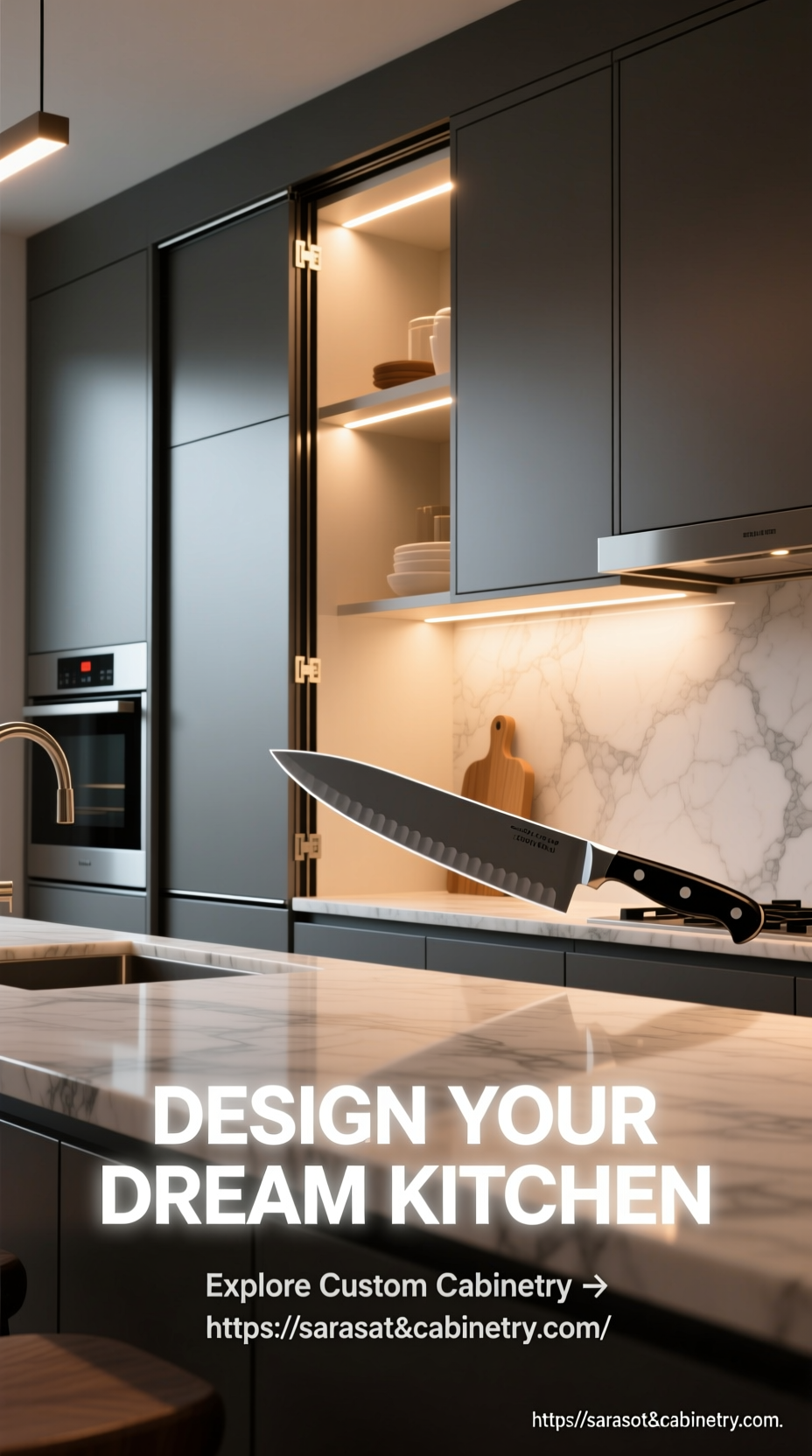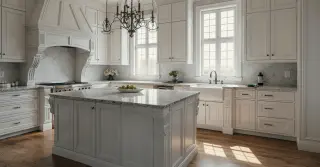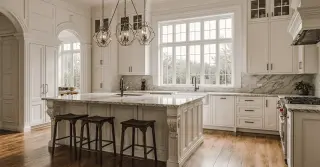Transitional Style Kitchen

Transitional Style Kitchen: Harmonizing Contemporary Sophistication with Classic Warmth
A Transitional Style Kitchen embodies a seamless blend of classic charm and contemporary sleekness, producing a kitchen that is welcoming yet highly practical. It attracts both homeowners and design professionals for its adaptability in terms of finishes, materials, and floorplans, crafting kitchens that appear modern without forsaking classic appeal. Through the combination of minimalist forms and conventional accents, transitional kitchens maintain a sophisticated yet approachable ambiance. The careful selection of cabinetry, countertops, and hardware defines the overall atmosphere, allowing each element to complement one another harmoniously. Kitchen Design experts often emphasize that this style is perfect for those seeking a versatile aesthetic that adapts to evolving tastes.
Strategic lighting is pivotal in transitional kitchens, shaping the mood and enhancing usability. A combination of ambient, task, and accent lighting—ranging from ceiling recesses to under-cabinet LEDs and designer pendants—creates depth and visual interest. Sunlight streaming through expansive windows or well-positioned skylights emphasizes openness and enhances the kitchen’s welcoming nature. Professional kitchen designers suggest selecting lighting fixtures that merge traditional craftsmanship with modern minimalism, such as brushed nickel pendants over an island or a chandelier with sleek detailing. Well-planned lighting emphasizes premium materials and architectural details, amplifying the kitchen’s luxurious and polished aura.
Cabinetry in a Transitional Style Kitchen often features a blend of classic raised panels and flat-front doors, allowing for a seamless integration of traditional and modern elements. Pale neutrals and subtle earthy hues create a tranquil canvas that complements metallic accents or natural wood elements. Custom kitchen cabinetry can further elevate the space, with options like soft-close drawers, integrated storage solutions, and specialized compartments for appliances and utensils. Balancing open and closed storage allows for both decorative display and efficient organization, maximizing functionality and appeal.
Counter surfaces serve as both functional and aesthetic focal points, allowing for the interplay of contrasting materials. Durable and classic materials like granite and quartz are often complemented by wooden or marble surfaces to add richness and dimension. The choice of countertops should complement both cabinetry and flooring, creating a cohesive palette that enhances the kitchen’s overall aesthetic. Incorporating waterfall edges or multi-tiered counter designs adds contemporary interest while preserving classic balance. They combine utility and design, functioning as both preparation areas and centerpiece elements that showcase personality.
Transitional kitchens often feature floors that are both durable and visually refined. Hardwood, large-format tiles, and natural stone are commonly selected for their durability and classic appeal. The texture and color of the flooring can subtly anchor the room, providing contrast to lighter cabinetry or echoing the warmth of wooden accents. Opting for visually textured yet low-maintenance flooring allows the kitchen to feel inviting, structured, and harmonious. Thoughtful selection guarantees a seamless integration of style, utility, and comfort.
Appliance selection blends technology with aesthetic cohesion, enhancing usability without detracting from the style. Concealed and flush-mounted appliances, from ovens to refrigerators, support a streamlined, clutter-free environment. Professionals advocate for appliances that harmonize visually with the space while maximizing operational efficiency. Thoughtful cabinetry for appliances preserves surface space and maintains the kitchen’s sophisticated, orderly aesthetic.
Cabinet pulls, faucets, and lighting act as understated but significant design elements. Brushed nickel, matte black, and antique brass finishes are frequently chosen to complement cabinetry and lighting, tying together the overall look. Drawer pulls, cabinet knobs, faucets, and sink designs can subtly bridge the gap between traditional and contemporary styles, enhancing the kitchen’s cohesive appeal. Experts recommend enduring hardware choices to preserve elegance and adaptability over time.
Decor and accessories in this kitchen style are carefully curated to reflect personal taste without overwhelming the space. Subtle decorative items, such as ceramic vases, artisanal bowls, or minimalist artwork, enhance the environment while maintaining a clean and elegant feel. Rugs, cushions, and fabric finishes add comfort and dimension, counterbalancing hard surfaces. Design experts recommend a curated approach to accessories, fostering a welcoming and stylish space.
Above all, transitional kitchens achieve the rare balance of classic appeal and updated refinement. From structural elements to finishing touches, each component contributes to a harmonious, adaptable, and aesthetically pleasing environment. By embracing the principles of transitional design, homeowners can enjoy a kitchen that is not only a culinary workspace but also a central gathering place that reflects style, comfort, and practicality. Expert kitchen designers continue to recommend this style for those seeking a balanced, enduring design that resonates with diverse tastes while delivering lasting beauty and performance.




